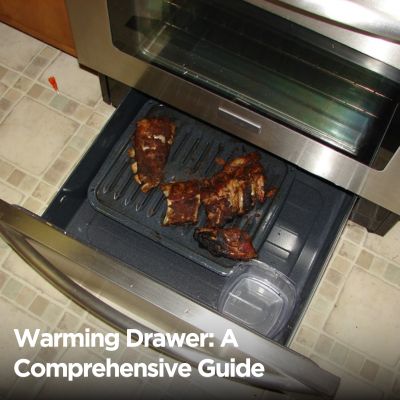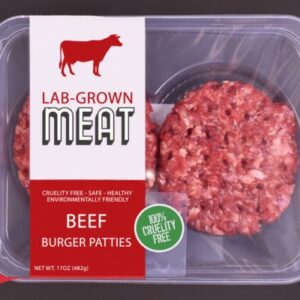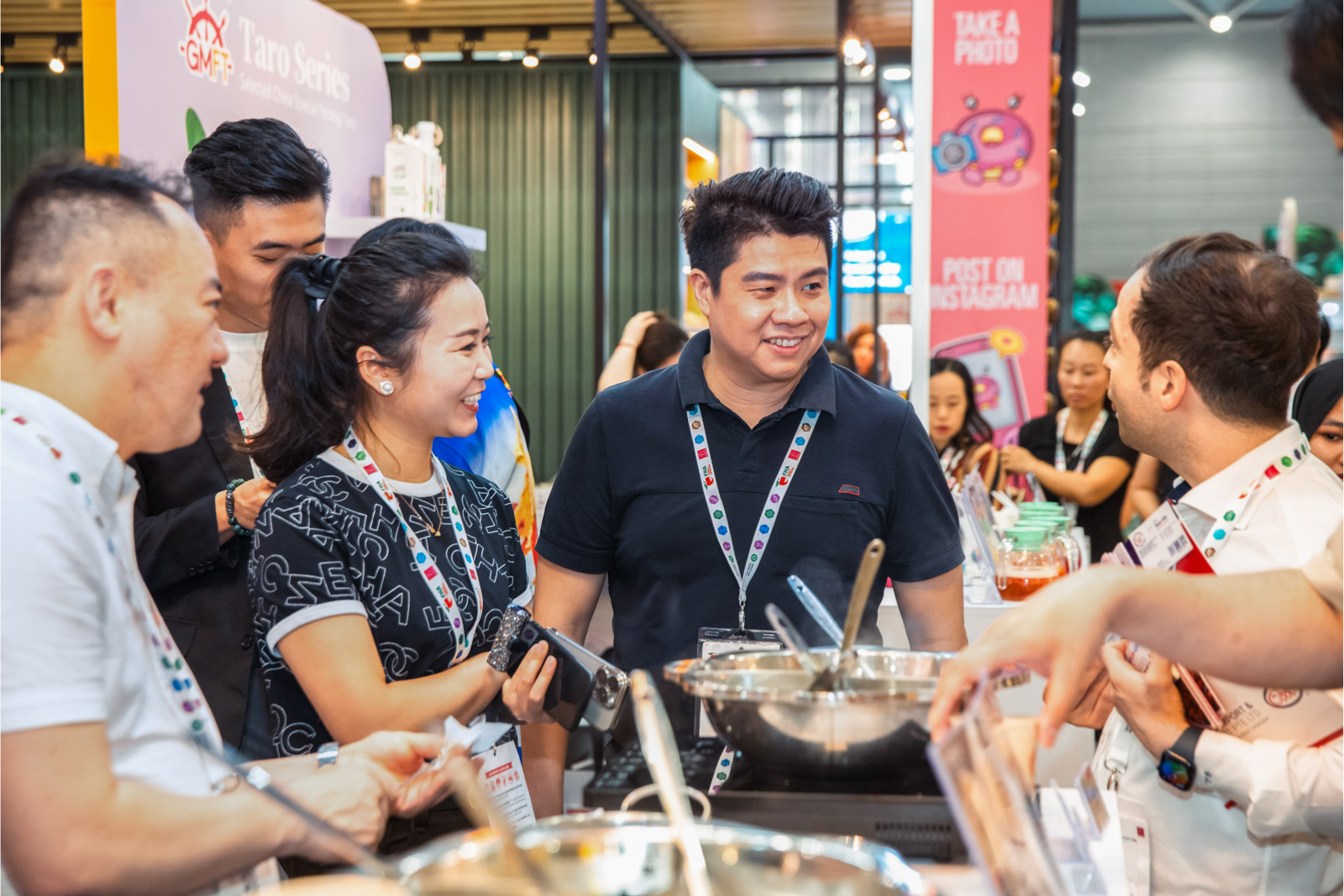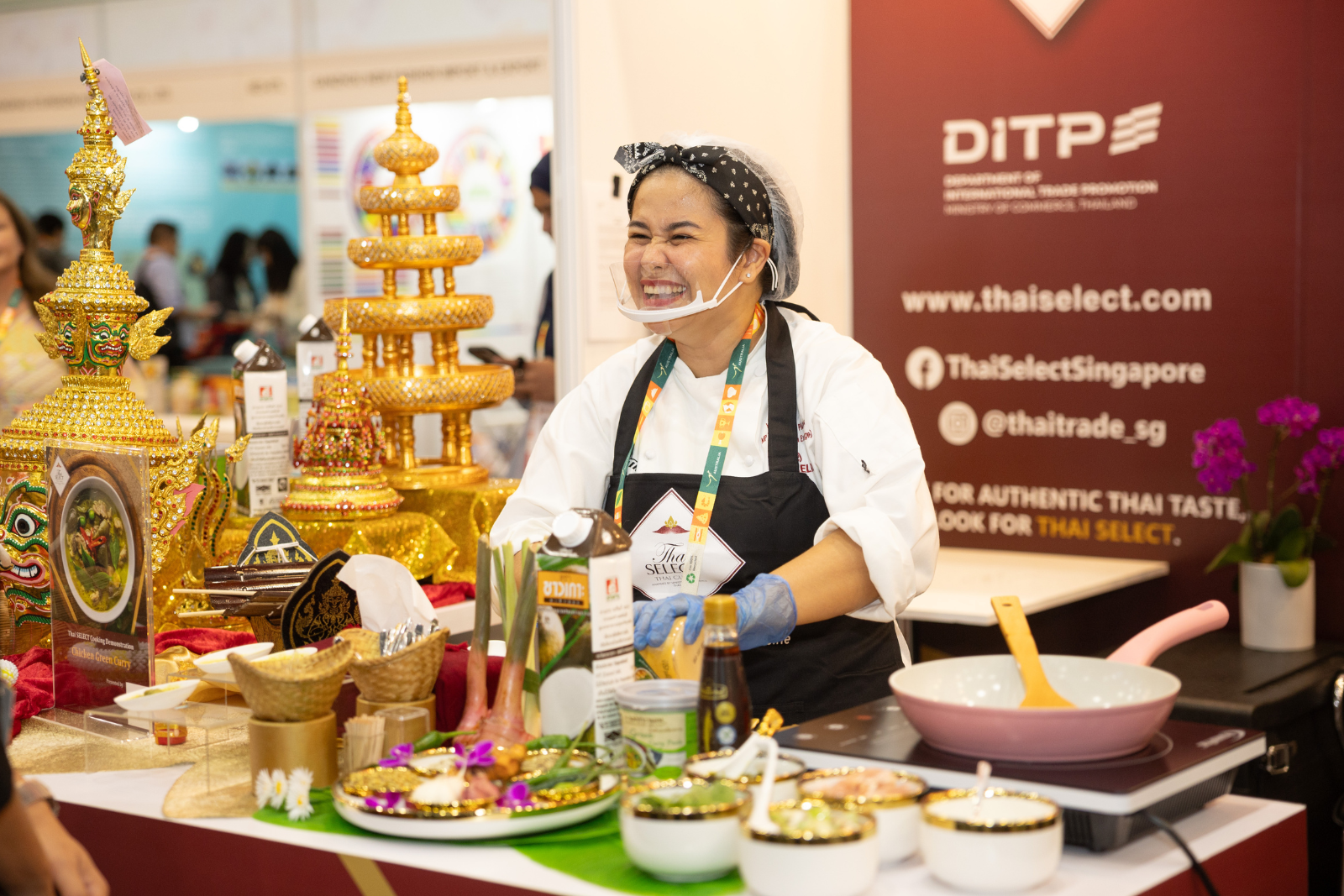A warming drawer is a must-have appliance in professional kitchens, keeping food at the perfect serving temperature without overcooking or drying it out. It’s commonly used in restaurants and hotels to ensure meals stay fresh, flavorful, and ready to serve.
But it does more than just keep food warm. It also helps proof dough and gently holds delicate ingredients at a steady temperature.
In the hospitality industry, where consistency and speed matter, warming drawers help kitchens run smoothly. They allow chefs to handle large orders, reduce food waste, and ensure every dish arrives at the table hot and well-presented.
This guide will explain warming drawers in detail, including their features and benefits and how they improve efficiency in restaurants and hotels.
What is a Warming Drawer?
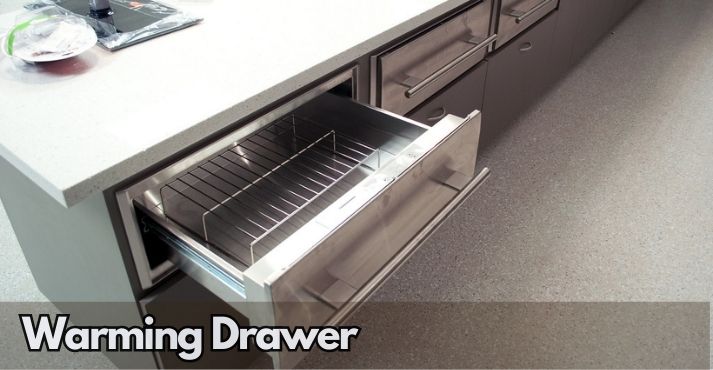
A warming drawer, also called a proving drawer, is a kitchen appliance designed to keep food warm without overcooking or drying it out. It maintains a steady temperature, ensuring dishes stay fresh and ready to serve.
Commonly found in professional kitchens, restaurants, and hotels, it helps chefs manage meal timing efficiently. It keeps food at the perfect temperature until it’s ready to be plated.
A warming drawer is usually built into kitchen cabinetry and positioned as a drawer under the oven for easy access. It comes in different sizes to suit different kitchen needs. Most models have adjustable temperature settings, allowing precise control based on the type of food being stored.
In many professional settings, a warming drawer functions like a warming oven, providing a reliable solution for keeping meals hot and ready to serve without compromising quality. This aligns with the growing demand for efficient, space-saving kitchen appliances.
According to market projections, the global drawer warmers market is expected to be valued at USD 307.2 million in 2023 and grow at 3.7% annually through 2033, highlighting their increasing importance in modern kitchens.
How Does a Warming Drawer Work?
A warming drawer oven uses controlled heating elements to keep food warm without overcooking. Thanks to its insulated design, these elements generate gentle, steady heat evenly distributed throughout the oven warming drawer. This insulation helps maintain a consistent temperature while reducing energy consumption.
In terms of kitchen layout, a warming drawer’s space-saving design enables flexible placement in different areas, ensuring it complements the overall flow and functionality of the kitchen.
Most models offer adjustable temperature settings, typically between 80°F and 200°F (27°C to 93°C), so chefs can control heat levels for different foods.
Some warming drawer ovens also include moisture controls to prevent dryness and ensure food stays fresh. These appliances are more energy-efficient than traditional ovens, making them cost-effective for professional kitchens.
Whether used to keep dishes warm, proof dough, or preheat plates, a warming drawer helps maintain food quality while improving kitchen efficiency.
Key Features of Warming Drawers
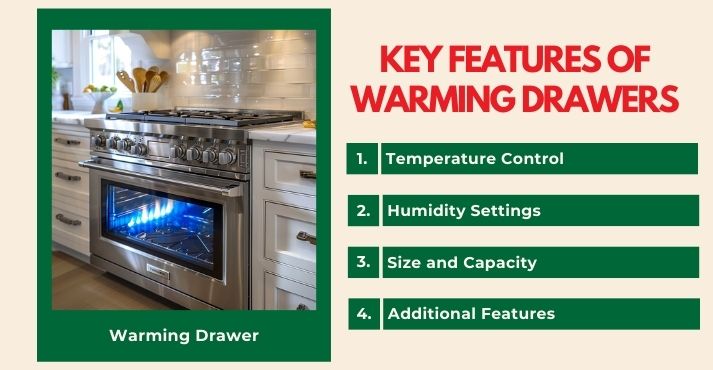
Warming drawers are designed to offer precise temperature and moisture control, making them an essential piece of kitchenware in professional kitchens. They do more than keep food warm; they are also great for proofing dough, warming plates, and maintaining ideal conditions for various dishes.
These appliances are often displayed at events like the Food Service Equipment Trade Show, where kitchen professionals discover the latest technology.
Whether in a restaurant, hotel, or bakery, a warming drawer ensures food is served at its best. With various features designed for efficiency, these appliances help streamline kitchen operations and improve food presentation.
Below are some key features that make warming drawers essential in commercial kitchens:
1. Temperature Control
A warming drawer allows chefs to adjust temperatures based on stored food. Most models offer a temperature range of 80°F to 200°F (27°C to 93°C), ensuring everything from delicate pastries to hearty meals stays at the perfect serving temperature without overcooking or drying out.
Some high-end models include preset temperature modes for specific foods, such as bread warming, plate heating, and slow cooking.
2. Humidity Settings
Many warming drawers feature adjustable humidity controls, which help retain moisture in dishes. This is useful for items like breads, pastries, and roasted meats, keeping them from drying out while maintaining their texture and flavor.
Some advanced models offer separate moisture zones, storing different foods under different humidity levels simultaneously. This is beneficial in high-volume kitchens that handle multiple dishes at once.
3. Size and Capacity
Warming drawers come in various sizes and capacities to accommodate different hospitality needs. Small models are perfect for cafés or small restaurants, while larger units cater to hotels, banquet halls, and high-volume kitchens that require multiple dishes to stay warm simultaneously.
Some models are designed to fit under ovens, making them a space-saving addition to compact kitchens without compromising functionality.
4. Additional Features
Modern warming drawers include timer settings for automatic shut-off, soft-close doors for smooth and quiet operation, and compatibility with various cookware types, ensuring seamless integration into any kitchen setup.
Some high-tech models even offer smart controls, allowing chefs to monitor and adjust settings remotely via a mobile app or kitchen control system.
Benefits of Using a Warming Drawer in Commercial Kitchens
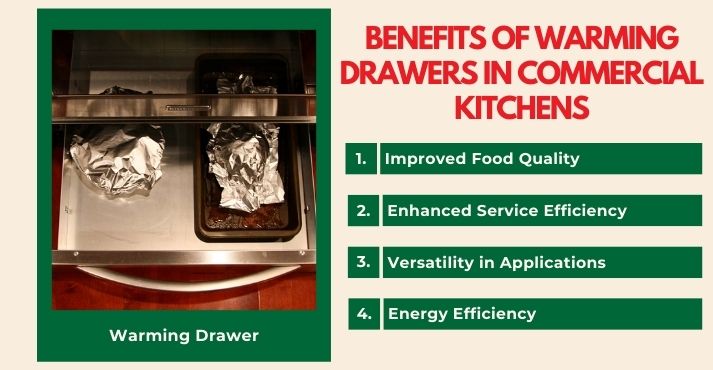
Warming drawers offer multiple benefits, especially when starting a catering business where efficient and high-quality food service is essential.
These appliances help keep food at the right temperature for serving, which is crucial for maintaining the flavor, texture, and overall presentation of dishes.
Here’s a breakdown of the major benefits that warming drawers bring to professional kitchens:
1. Improved Food Quality
A warming drawer ensures food stays at the perfect temperature without overcooking or drying it out. This is especially important for dishes that require careful temperature management, such as meats, baked goods, and side dishes.
With precise temperature control, warming drawers help maintain the flavor and texture of each dish, ensuring it is just as fresh when served as it was when it was first made.
2. Enhanced Service Efficiency
During busy service periods, restaurants and hotels rely on efficiency to meet customer demand. Warming drawers play an important role in this process, allowing chefs and servers to keep prepared dishes warm while waiting for the right moment to serve them.
Whether used in the bottom drawer of an oven or as a standalone unit, these drawers ensure that dishes are ready without compromising food quality. This helps streamline kitchen operations, improve service speed, and reduce wait times.
3. Versatility in Applications
Warming drawers are highly versatile appliances with a range of applications. They can be used for more than just keeping food warm. For example, they can warm plates, which helps maintain food temperature longer and enhances the overall dining experience.
They are also ideal for proofing dough, creating an environment where yeast-based products can rise perfectly. In addition, some models are designed to keep beverages warm or maintain delicate ingredients like sauces at a consistent temperature. Their adaptability makes them essential for kitchens of all types.
4. Energy Efficiency
Warming drawers are much more energy-efficient than traditional warming methods such as ovens or heat lamps. Ovens often use a lot of power to maintain heat, while heat lamps may lead to uneven warming.
Warming drawers, on the other hand, provide consistent heat with lower energy consumption. This makes them a cost-effective solution for commercial kitchens looking to reduce energy costs while ensuring high-quality service and food delivery.
Moreover, it aligns with the growing focus on sustainability in food service equipment, helping businesses lower their carbon footprint and operate more efficiently.
Conclusion
A warming drawer is a vital appliance in commercial kitchens. It offers multiple benefits, such as improved food quality, enhanced service efficiency, and versatility in its applications.
It ensures food is served at the ideal temperature, preserving its texture and flavor, which is important for maintaining a positive dining experience.
Whether used in restaurants, hotels, or other food service settings, warming drawers streamline operations and support faster service without compromising quality.
As commercial kitchens have evolved, these kitchenware tools have become essential, helping restaurants handle high-volume service while using less energy for a more sustainable operation.

